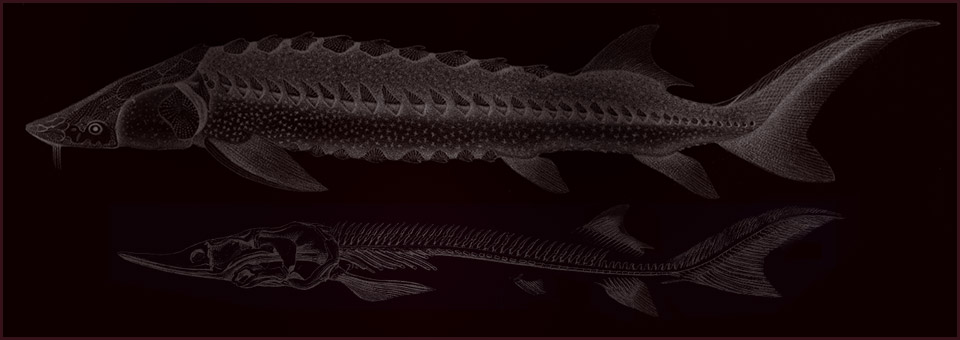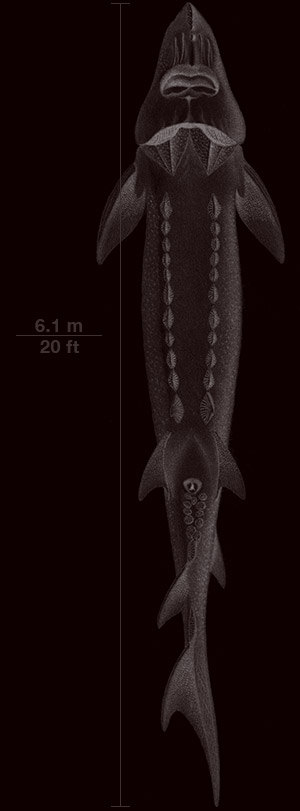Meet North america’s largest freshwater fish
Species Name : Acipenser Transmontanus
Latin (Scientific) Definition : Sturgeon Beyond the Mountains
Also Known As : Oregon Sturgeon, Pacific Sturgeon, Sacramento Sturgeon

Geographic Range : North America’s Pacific Slope
Habitat : Coastal Rivers and Streams
Physical Description : Large, Elongated and Cylindrical
Reproduction : Several times is possible for Males 10 to 20 Years and Females 15 to 25 Years
Lifespan/Longevity : 80 to Over 100 Years Old
Behavior : Natatorial, Motile
Perception Channels : Tactile, Chemical
Maximum Size : 816 kg (1,799 lb)
Maximum Length : 6.1 m (20 ft)
Largest Captured On Record : Estimated 498.9 kg (1100 lb), 3.8 m (12 ft 4″)
Largest Captured On Record Before Endangerment/Catch and Release Laws: 682 kgs (1503 lbs)
The white sturgeon is a slow-growing and long-lived fish who’s appearance has remained largely unchanged for 175 million years. The body is covered with large bone scutes or plates instead of scales which gives them a somewhat prehistoric appearance. This combined with most specimens commonly growing to the length of a small school bus or longer has made them a highly-sought prize game fish.
With 11-14 scutes before the dorsal, 38-48 on each side and 9-12 along the bottom, these bony protrusions work like armour-plating on the beast, which remains extremely quick and agile due to it’s cartilage skeleton instead of heavier bone.
Danger to Humans: Minimal
While growing to reach massive sizes, White Sturgeon have never behaved aggressively toward humans. They actually have no teeth and feed by sucking prey through their ventral vacuum-like mouth that is directed downward on their heads to face below them.
They are quite active however, and do leap from the water occassionally and tail-walk when hooked.

